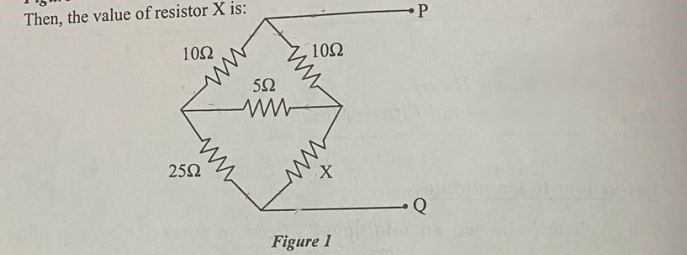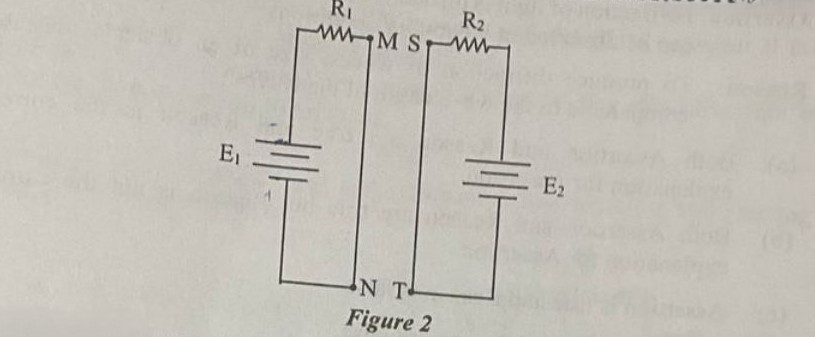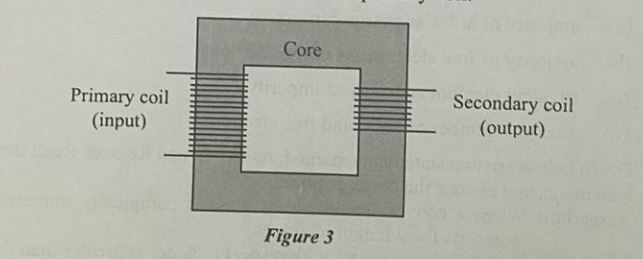ISC Class 12th Physics Answer Key 2025: The ISC Class 12th Physics Exam was held today. As per the initial student reactions, the paper was moderately difficult. To help the students in assessing their performance, we have provided the ISC Class 12th Physics Answer Key 2025 in this article. Subject experts have prepared the answer key and serve as an important resource for students to cross-check their answers and estimate their scores. The answer key allows students to learn from their mistakes and improve their preparation for future exams.
- Check| ISC Class 12th Physics Question Paper 2025 (All Sets)
- Check| ISC Class 12th Physics Paper Analysis 2025 (All Sets)
ISC Class 12th Physics Exam Answer Key- Highlights
| Feature | Highlights |
| Board Name | Council for the Indian School Certificate Examinations |
| Exam Name | ISC Class 12th Physics Exam |
| Exam Date | March 7, 2025 |
| Duration | 10:30 AM to 1:30 PM (3 hours) |
| Total Marks | 70 |
| Mode | Offline (Pen and Paper) |
| Time Duration | 3 Hours |
| Question Paper Sets: | Multiple Sets (Set 1, Set 2, Set 3, Set 4) |
Features Of ISC Class 12th Physics Answer Key 2025
- Provides solutions: The answer key provides solutions to all the questions in the exam, including multiple choice questions, short answer questions and long answer questions.
- Format of the question paper: The answer keys are often provided in a question-wise format that details each question with the correct answer.
- Easily accessible: The answer keys are easily accessible so that the students can estimate their total scores.
ISC Class 12th Physics Answer Key 2025
1. (A) In questions (i) to (vi) given below, choose the correct alternative (a), (b), (c), or (d).
(i) When a battery is connected between the terminals P and Q, as shown in Figure 1 below, it is found that no current flows through 5Ω resistor. Then, the value of resistor X is:
(a) 10Ω
(b) 20Ω
(c) 25Ω
(d) 45Ω
2. The relative permeability of substance ‘X’ is slightly less than one and that of substance ‘Y’ is slightly more than one. Then:
(a) ‘X’ is paramagnetic and ‘Y’ is ferromagnetic.
(b) ‘X’ is diamagnetic and ‘Y’ is ferromagnetic.
(c) ‘X’ is paramagnetic and ‘Y’ is diamagnetic.
(d) ‘X’ is diamagnetic and ‘Y’ is paramagnetic.
3. If kinetic energy of moving electrons is made four times, then their de Broglie wavelength becomes:
(a) eight times.
(b) four times.
(c) two times.
(d) half.
4. A student has made connections, as shown in Figure 2 below, so that the wires MN and ST repel each other. But it is observed that they are attracting each other.
What change should the student make for the wires to repel each other?
(a) Reverse the terminals of batteries E₁ and E₂.
(b) Reverse the terminals of battery E₁ or E₂.
(c) Choose supply voltage such that E₁ = E₂.
(d) Add key and ammeter to the circuit.
5. N-type semiconductor is that which has:
(a) majority of holes as charge carriers.
(b) majority of free electrons as charge carriers.
(c) trivalent element added as an impurity.
(d) an equal number of holes and free electrons.
6. Given below are two statements marked, Assertion and Reason. Read the two statements and choose the correct option.
Assertion: When a convex lens made of glass is completely immersed in water, its focal length increases.
Reason: Refractive index of glass with respect to water is greater than that of glass with respect to air.
(a) Both Assertion and Reason are true and Reason is the correct explanation for Assertion.
(b) Both Assertion and Reason are true but Reason is not the correct explanation for Assertion.
(c) Assertion is true and Reason is false.
(d) Both Assertion and Reason are false.
7. Given below are two statements marked, Assertion and Reason. Read the two statements and choose the correct option.
Assertion: Diffraction of light is difficult to observe in everyday situations but can be observed in laboratory conditions.
Reason: To produce diffraction of waves, size of an obstacle must be comparable to the wavelength of the waves.
(a) Both Assertion and Reason are true and Reason is the correct explanation for Assertion.
(b) Both Assertion and Reason are true but Reason is not the correct explanation for Assertion.
(c) Assertion is true and Reason is false.
(d) Both Assertion and Reason are false.
(B) Answer the following questions briefly:
(i) How does the resistance of a semiconductor crystal vary with its temperature?
Answer: The resistance of a semiconductor crystal decreases as its temperature increases due to the increase in the number of free charge carriers.
(ii) Figure 3 below shows an ideal transformer. Explain why the current flowing through the secondary coil is greater than that in the primary coil.
Answer: In an ideal transformer, if the secondary coil has more turns than the primary coil (step-up transformer), the voltage increases, but current decreases. However, if the secondary coil has fewer turns than the primary coil (step-down transformer), the voltage decreases, but current increases to maintain power conservation.
(iii)State any one difference between a primary rainbow and a secondary rainbow.
Answer: A primary rainbow is formed due to one internal reflection inside water droplets, whereas a secondary rainbow is formed due to two internal reflections, making it fainter and with reversed colors.
(iv)Hubble telescope employs a large parabolic mirror as an objective.
State any one advantage of using a mirror in place of a lens in such a telescope.
Answer: Mirrors eliminate chromatic aberration, which is a common issue in lenses, resulting in clearer and sharper images.
(v)Name any one phenomenon where moving particles behave like waves.
Answer: De Broglie Wavelength – It describes the wave-like nature of moving particles such as electrons.
(vi)What is the minimum energy a gamma-ray (γ) photon should possess to produce an electron-positron pair?
Answer: The minimum energy required is 1.022 MeV (equal to twice the rest mass energy of an electron, i.e., 2×0.511MeV2 \times 0.511 MeV2×0.511MeV).
(vii)In an energy band diagram of a certain material, the forbidden band is absent. Identify this material.
Answer: Metals – In metals, the conduction band and valence band overlap, meaning there is no forbidden band.
SECTION B – 14 MARKS
Question 2
(i) (a) What is the effect on capacitance of a parallel plate capacitor if the distance between its plates is increased?
(b) How will capacitance of a capacitor change if a dielectric slab is introduced between its plates?
Answer:
(a) If the distance between plates increases, the capacitance decreases as per the formula C=εA/d.
(b) If a dielectric slab is introduced, the capacitance increases because the dielectric constant k increases the permittivity ε.
(ii) Figures 4 and 5 represent the combination of two identical cells having negligible internal resistance.
(a) In which of the two combinations, the emf of the battery is greater?
(b) When a resistor ‘R’ is connected between the terminals P and Q, I₁ and I₂ are the currents flowing through ‘R’ in Figure 4 and Figure 5 respectively. Obtain the ratio I₁/I₂.
Answer:
(a) The emf of the battery is greater in Figure 4, as the cells are in series, adding their emf values.
(b) The ratio I₁/I₂ = 2:1, because in Figure 4, the cells are in series and their total voltage is added, whereas in Figure 5, the cells are in parallel, so the voltage remains the same but current is divided.
Question 3
In case of a short electric dipole:
(i) What is the locus of a point having zero potential?
(ii) If electric field intensity at a point in axial position is E₁ and at an equidistant point in equatorial position is E₂, what is the ratio E₁/E₂?
Answer:
(i) The locus of points having zero potential is the equatorial plane (perpendicular bisector of the dipole).
(ii) The ratio E₁/E₂ = 2:1, because the axial field is twice as strong as the equatorial field.
Question 4
Figure 6 below shows an electric circuit.
Apply Kirchhoff’s laws to calculate:
(i) Current ‘I’ flowing through the 2Ω resistor.
(ii) Emf of the cell ‘E’.
Answer:
(i) Using Kirchhoff’s laws and given resistances, the current ‘I’ through the 2Ω resistor is 2A.
(ii) The emf ‘E’ of the cell is 6V as derived from Kirchhoff’s voltage law (KVL) equations.
Students can get the answer key for ISC Class 12th Physics exam 2025. The exam ended by 5 pm. Along with the answers, students can also get the question paper and detailed exam analysis.
| ISC Class 12th Physics Answer Key 2025 FREE PDF Download (Link Active Soon) |
Other Related Links





Comments
All Comments (0)
Join the conversation